Search and rescue with the Civil Air Patrol was serious business, looking for lost planes that usually turned up unharmed, though not always. Most of those years aloft were taken up with the pure joy of flying, poking holes in the sky, racing our friends to our condo in the Florida panhandle to see how many $2.50 a dozen raw oysters we could eat. But interspersed with seeing our amazing country from cloud level were a few close calls and a tragedy that taught life lessons that help me navigate to this day.
Even when we were having fun, we knew not to get too cocky. One of the highlights of every year was the Oshkosh Air Show held at the airport in Oshkosh, Wisconsin.
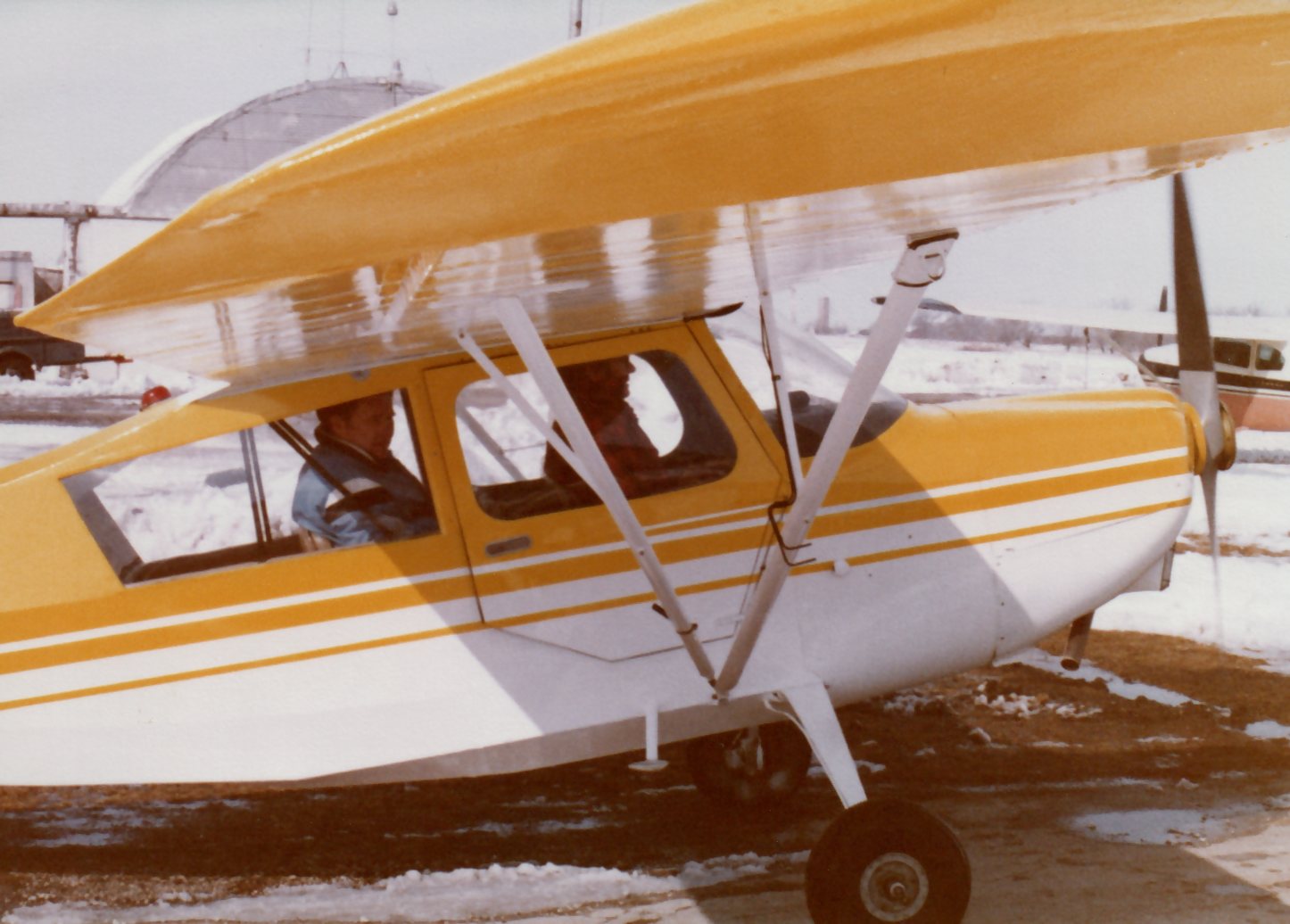



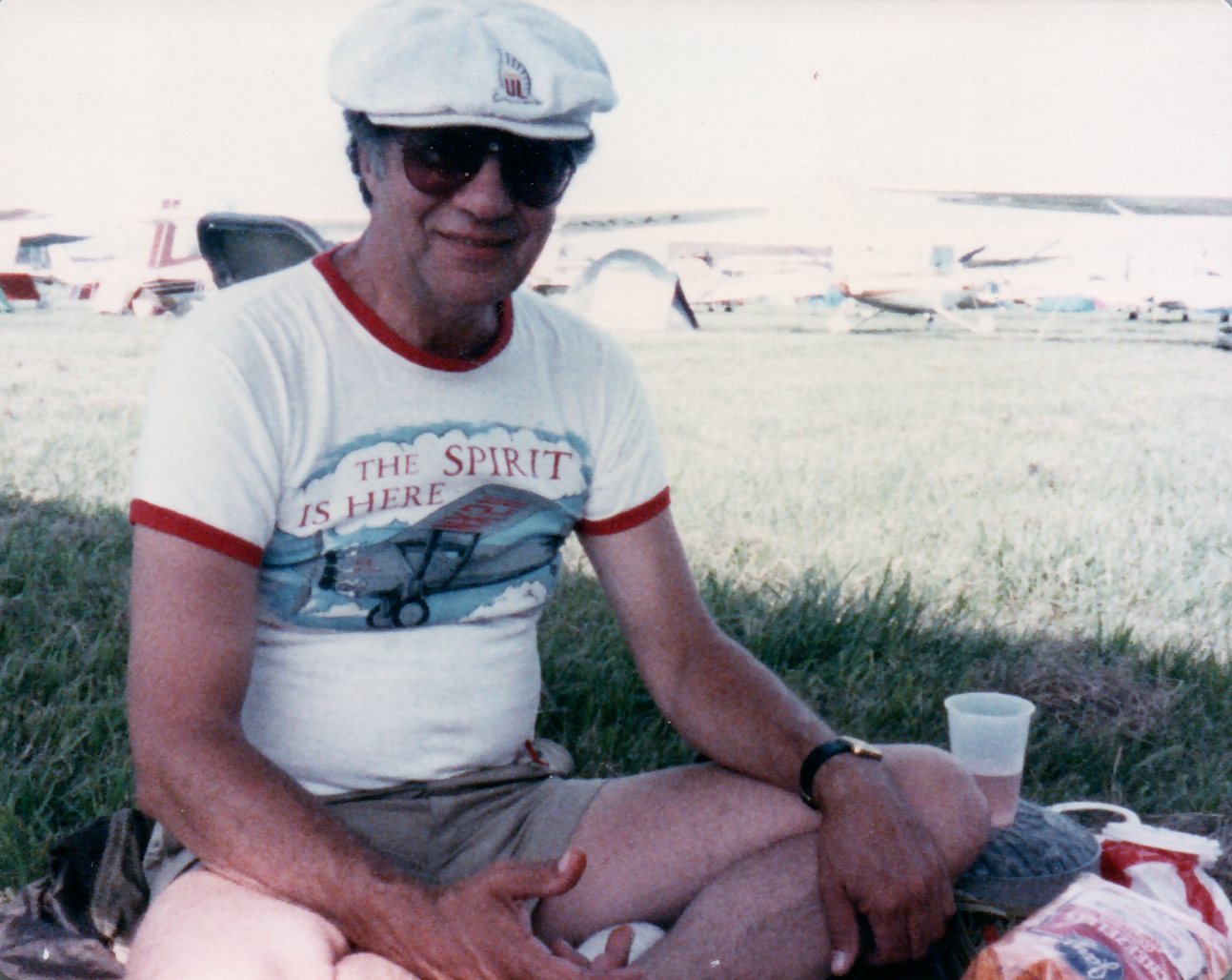
Normally, I am the kind of person who prefers to camp at a Hilton. The exception was camping under an airplane wing at the Oshkosh Air Show, the biggest meeting of small airplane enthusiasts in the country. Today, attendance is over 600,000 people. Back in the late 1970s it must have been 200,000 or more over the seven day meeting. Flying in was an experience that sharpened all your senses. There would be a line of 25 or more small planes in a landing pattern that stretched more than a mile. Once you touched down you would quickly be directed to a tiedown space. We’d set up our tent under the wing of our Cessna and head out to inspect the hundreds of classic, experimental, homebuilt, or warbirds on display. Warbirds were World War II and Korean military aircraft that had been restored by groups of veterans and admirers. There were acrobatic bi-wing Pitts Specials to examine up close, and opportunities for rides in planes you’d never have a chance to fly yourself. There was a huge building full of vendors selling every kind of equipment you might dream of adding to your plane. Because a lot of our friends were there, dinner was a group cookout at our campsite. Late every afternoon we gathered along the runway to see the air show with aerobatics performed by professional and amateur stunt fliers doing loops, barrel rolls, tailslides and more. The Navy Blue Angels or Air Force Thunderbirds did their own breathtaking formations and knife edge passes. Refurbished warbirds flew by in formation, their gas guzzling engines roaring. One of my most exciting memories is seeing a Qantas Airlines Boeing 747 do a low-level flyby down the runway at about 200 feet off the ground. None of us had seen a plane that big and loud and close and as the vibrations rumbled through our bodies, it took our breath away. The Oshkosh Air Show thrilled us and kept us humble.
There were always more skills to learn. We used our airplane for business to visit clients throughout the state of Illinois and to attend business conferences across the country. Early in our flying careers we left for a convention at the Silverado Country Club in Napa, California. There were mountains in the way and we flatlanders had no experience, so we landed at the base of the mountains and took lessons to teach us to gain altitude before approaching the mountain range, as well as the dangers of downdrafts and updrafts in rocky terrain and to expect thunderstorms to build up in the afternoons. Those lessons helped several years later when we flew to a convention in Acapulco, Mexico. We landed in Brownsville, Texas, to get permission to fly into Mexico. After a delay which we later realized we could have probably shortened with a dollar donation to officials, we flew over the border and down the Yucatan Peninsula to refuel at Tampico in the state of Tamaulipas. Flying in Mexico seemed the same as flying in the U.S. Air Traffic Control spoke English and directions were easy to understand. We knew we would have to reach an altitude above 10,000 feet where the air was very thin to avoid flying into Mexico City’s commercial air space. While taking turns supplementing our oxygen from an oxygen bottle, we looked in vain for the outlines of Mexico’s capitol as we flew over it, but the smog covered not only the city but the mountains around it. We could have been anywhere. Nothing to see. One hundred and ninety miles farther on, Acapulco was a whole different story with sunshine and clear skies. It was also the site of jarring contrasts. On the same day we were served breakfast by the pool from the longest, most elaborate buffet we had ever seen, we walked to the hotel’s Pacific Ocean beach and discovered it was protected by armed men in uniforms. In those days, travel to Mexico was relatively safe, and yet…
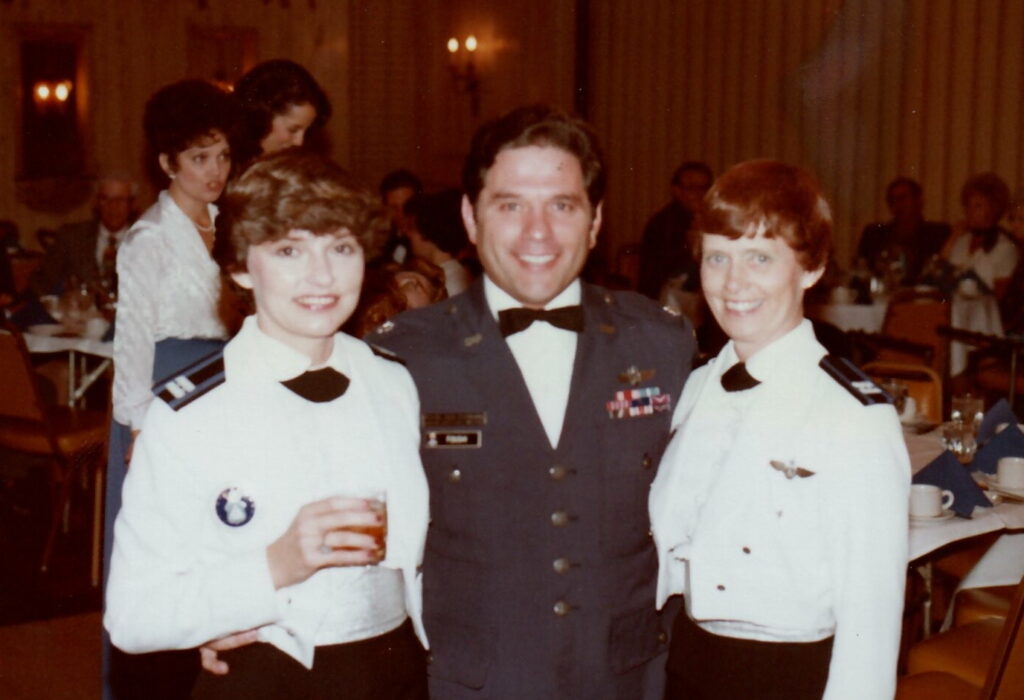
Sometimes our lessons were reinforced by other people’s mistakes. The FAA has strict rules for pilots, all designed to keep both the pilots and everyone else safe. You need a medical certificate to get your license and it must be renewed every five years (or two years if you are over 60.) No flying if you have imbibed alcohol in the last 24 hours. You need an instrument rating to fly in clouds or poor visibility. You are expected to check weather information before taking off, including the atmospheric pressure so you can set the altimeter. Plane engines must be checked by an authorized mechanic annually and engines must be rebuilt after 1800 to 2000 hours of flying. Those were just some of the rules and, as a group, we made every effort to follow and enforce them.
Even though our Squadron loved to party, we enforced that 24-hour alcohol rule without exception, or so we thought. But there was one member that we worried about, a man who owned his own plane. We all tried to keep an eye on him and on weekends, the Officer of the Day was instructed to get up close and personal to sniff out any digressions. But there was no Officer of the Day during the week at our volunteer field and one sunny day he took off with his young son in the co-pilot’s seat and his son’s friend in the back. They never made it back. Father and son died in the crash when they stalled and went nose first into a cornfield. Fortunately, the friend survived. Lesson learned: The FAA tries to protect you from yourself, but it doesn’t work if you don’t listen. I think about that lesson today when I hear people disparage the advice from the experts and die as a result.
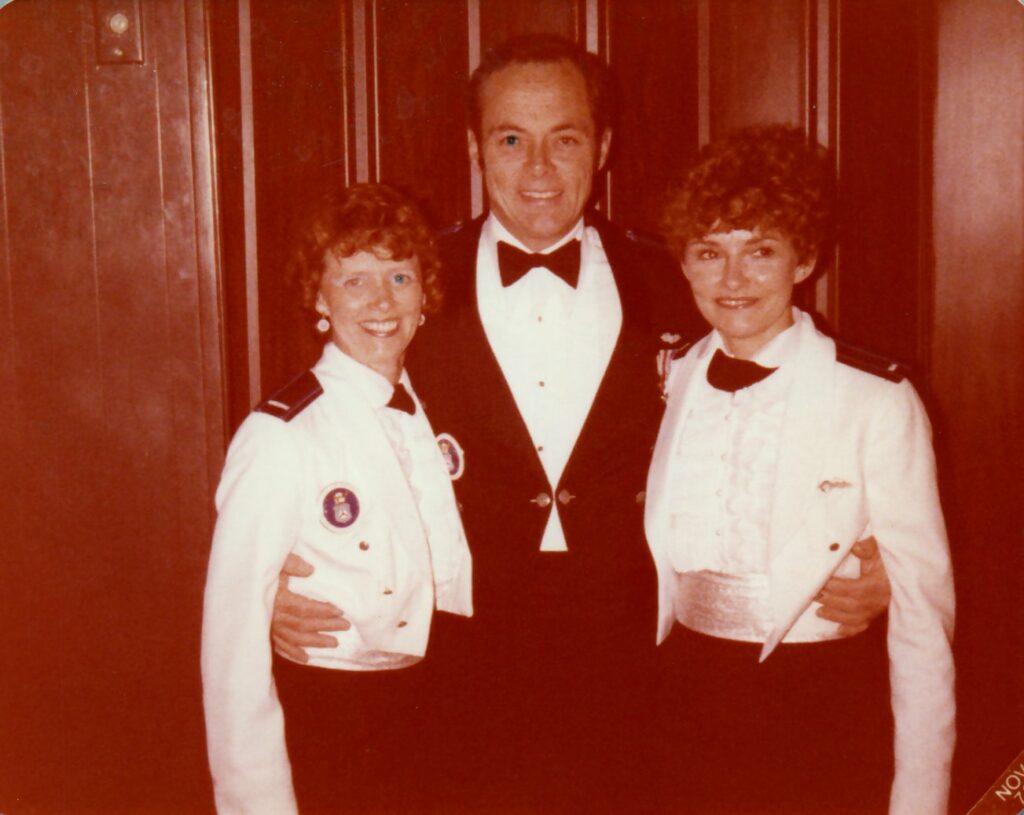
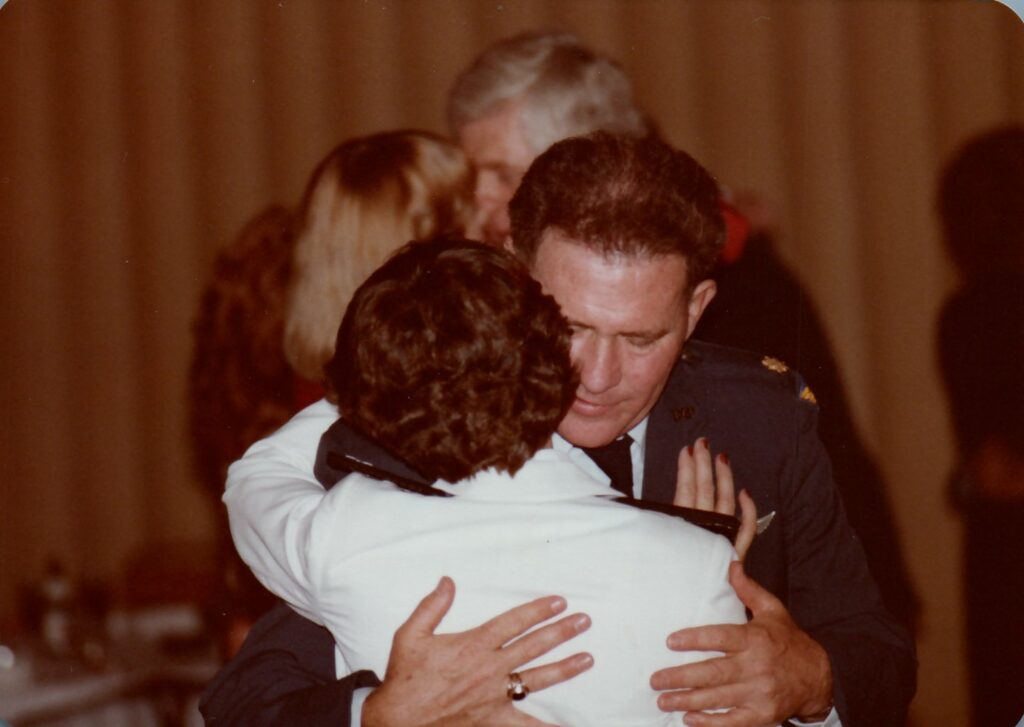
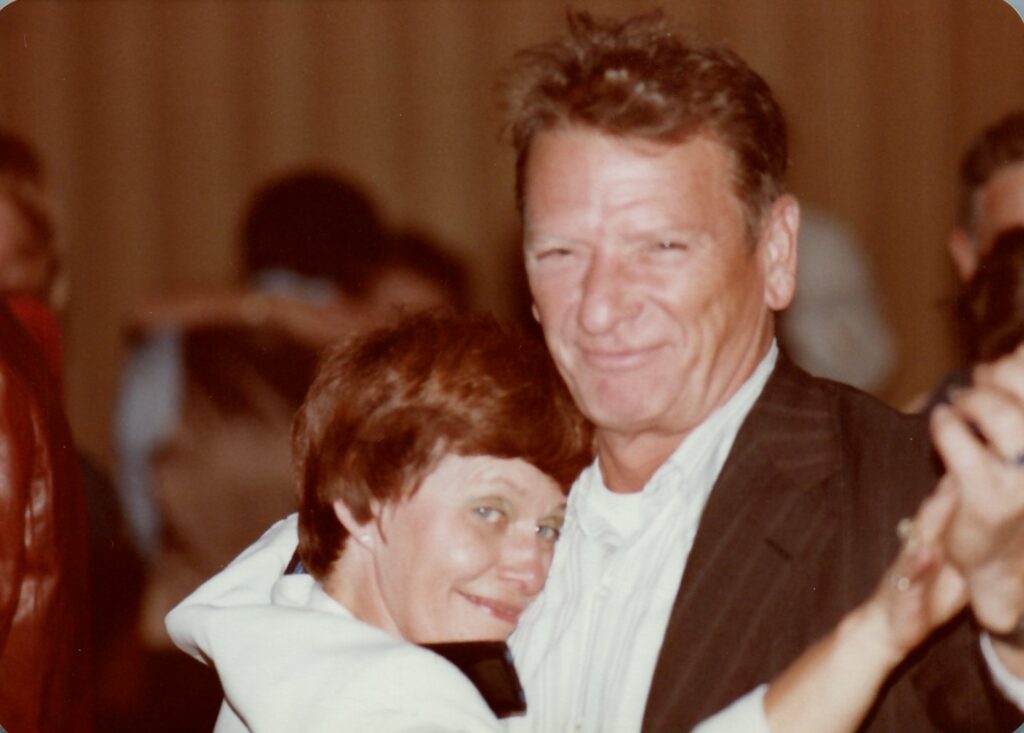

After sitting in too many airports waiting for the clouds to clear, both my husband and I signed up for instrument flight lessons. Without an instrument rating we flew VFR (Visual Flight Rules) requiring an unobstructed view of the ground. With the rating, we could get above those pesky clouds, file an IFR (Instrument Flight Rules) flight plan with the FAA and let a flight controller tell us which way to go. For those lessons we had to don a hood that blocked out everything but the instrument panel and learn to know up from down only by reading the dials in front of us. Simulations teach a lot, but real experience is better. My instrument instructor had a daytime job working at a Ford plant and had been asked to fly some union executives to a meeting in Nashville, Tennessee. It was a nighttime flight in sketchy weather, and he asked if I’d like to come along in the pilot’s seat for a lesson. From the Lansing, Illinois airport, we took off in the dark and it wasn’t long before we could see lightning off in the southwest. The air got more turbulent, bouncing us up and down and side to side as we headed south. But then, bits of ice began to hit the windshield and the airplane began to feel sluggish as the airspeed bled off. A glance out the window showed ice forming on the wings. A plane cannot fly with a load of ice obstructing the airflow over the wings. We contacted Flight Control for permission to change altitude to lose the ice, and fortunately, that worked. The rest of the trip was uneventful and the confidence I gained from the very real experience was invaluable.
As pilots, we talked to Air Traffic Controllers all the time, but we didn’t really know what was happening on the other side of the radio, so our Squadron arranged a tour of the FAA’s Air Route Traffic Control Center in Aurora, Illinois. This facility controlled air traffic throughout the Chicago area, both commercial and private. In a large dimly lit room, we watched flight controllers managing air traffic shown on small round computer screens with little dots moving across the grey background. When a pilot took off and alerted Center that he was on an IFR flight plan, he was told to squawk a four-digit code on his transponder. As soon as he did, that green four-digit transponder code attached to the plane’s blip on the controller’s screen. More information on each aircraft was on hand-written white cards on wooden holders that were constantly being shuffled around by the controllers as they assigned altitudes, direction of flight and warned of potential traffic conflicts before they passed the planes off to the next Control Center. The controllers rolled their chairs around to consult each other and supervisors roamed the floor behind them ready to answer questions or help with emergencies. At the time it seemed impressive. Looking back more than forty years later, it seems such a primitive system. Yet, it worked. The air waves in the U.S. were as safe then as they are now.
I got my instrument license on November 29, 1977. Winter in Chicago can be confining and gloomy and by January, I was feeling overworked and underappreciated and ready to run away from home. A friend offered his condo in Fort Lauderdale, Florida, a seemingly perfect place to run to. So, on January 7, I took off, through the clouds and into the sunshine. I made it a leisurely trip, stopping for the night in Nashville, TN, Montgomery, AL, and Tallahassee, FL, flying IFR, letting the Control Center guide me to St. Petersburg/Clearwater Airport. Although the weather was too cold for the beach, the food was delicious, sightseeing was fun, and I began to relax and stop feeling sorry for myself, ready to go home. On the 15th, I took off from Petersburg/Clearwater, IFR, confident that Control Center would get me home safely. Flying just below the clouds with all my navigation instruments working perfectly, I felt I was the sharpest pilot I would ever be. All those lessons and practice were paying off. My refueling stop at Albany, Georgia, would be easy to find even without Control Center guidance because it had a Non-Directional Beacon, a radio signal that let my ADF (Automatic Direction Finder) point right at the airport. But about half an hour before I was to turn east for the airport, my controller told me to make a right turn for the airport. I rechecked all my instruments. It was at least fifteen or twenty miles too soon to turn. I told the controller that my instruments showed turning would put me far south of the airport. He insisted he was right. Who to believe? He had the radar. I had the ADF pointing right at the airport farther north. I decided to trust my instruments and cancelled my flight plan, choosing to fly VFR. When the ADF showed Albany Airport 90 degrees to my right, I turned and contacted the Albany tower and landed without a problem. So, what happened? Had my transponder code somehow attached to another airplane on the radar screen? That hardly seemed possible. Back at Haedler Field, my fellow pilots brainstormed it, but we came to no logical explanation. No one I’ve talked to since can figure it out. What was it Ronald Reagan said, “Trust, but verify?” Maybe a good idea for flying airplanes, too.




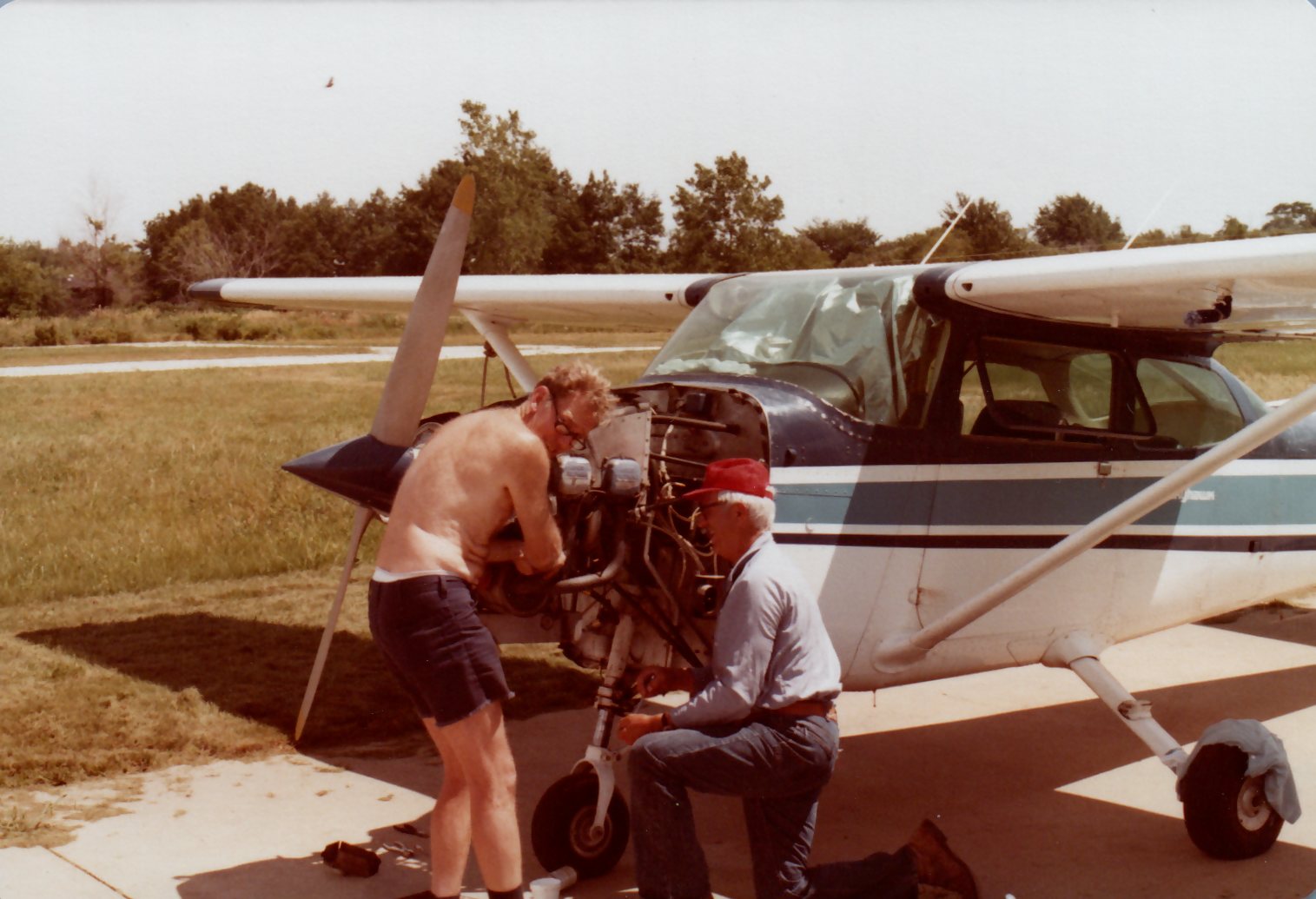
All pilots train for landing in difficult conditions. With the prevailing winds coming from the west at our home base, Haedler field, we all learned to do short field landings, getting over the big red balls on the power lines just east of the airport, then losing altitude quickly to get on the ground before running out of runway. We learned short field takeoffs, standing on the brakes while we pushed the throttle all the way forward before releasing so we’d climb more quickly. And, because the wind doesn’t always come straight down the runway, we learned to make cross wind landings by using the rudder pedal. The wind coming from the side pushes the airplane sideways. The pilot counteracts that by pushing on the rudder pedal to turn the nose of the aircraft into the wind, making it fly straight. The second airplane we owned was a Cessna 206. It was a six-seater, fixed wheel plane that allowed us to take more passengers and had several unique features, including one that allowed you to stow the rudders on the co-pilot’s side. One day I was scheduled to pick up my oldest son from the University of Illinois in the 206. Bill Wickersham, one of the instructors who was a former fighter pilot, asked if I would take him to pick up some equipment at a central Indiana airport before landing in Urbana. He had not flown in a 206 and wanted to see how it flew. I should have known I was in trouble when he got in the plane and started touching the controls. “What’s this?” “How does this work?”
“Stop it!” I said. You’re an instructor. You know better than to go poking around when you aren’t the pilot in charge.”
After our stop in Indiana, we took off for the little private airfield just north of Urbana. The weather report warned us to expect a slight crosswind, but the closer we got, the more apparent it became the crosswind was stronger than expected.
“Don’t worry,” Bill said. I’ll help you with the rudder.” I came in for the landing, shoving the left rudder all the way to the floor and wrestled the plane to the ground.
“I thought you were going to help me,” I complained to him.
Sheepishly, he confessed that while he was messing with the controls before we took off, he’d inadvertently stowed his rudders.
Lesson learned. If you are the pilot in command, slap the hand of anyone who wants to touch the controls, no matter who they are.
Our other escapade with crosswind landings happened in April of 1979. My husband was flying the 206, I was in the co-pilot seat and a fellow CAP member was in the seat behind me on our way back to our home base at Haedler Field. There was a strong crosswind from the left and Chuck used all his rudder and got the plane on the ground, but as we continued down the runway letting off speed, a wind gust caught under the left wing and gently flipped us over. There we were, all three of us hanging upside down from our seatbelts. “Anybody hurt?” I asked. “We better get out of here. There’s always a chance of fire.” We carefully unlatched and were climbing out the doors by the time our friends on the ground reached us. We were lucky, but it was the end of the 206.
Remember the rule of three that I described in Part One? You can handle one thing going wrong. You can probably handle the second thing going wrong. But the third thing will get you. I had a close call with that when I decided to fly by myself to visit my sister in Phoenix, Arizona, in June of 1977. A Cessna 182 has a listed top speed of 176 miles per hour, but you aren’t flying at top speed most of the time, and anyway, that is air speed. Your speed across the ground is affected by the winds aloft, which can speed you up or slow you down depending on wind direction, so a trip from the Chicago suburbs to Phoenix would take at least three days if there were no weather delays. My next to the last leg of the trip was a four-hour trip from Garden City, Kansas, to Tucumcari, New Mexico. I fueled the airplane, checked the weather, and figured I’d be in Phoenix in just a few hours. This was the trickiest part of the trip because there were mountains to cross. I didn’t get very far before I saw thunderheads beginning to pile up in the distance. I remembered my mountain flying training about afternoon storms and returned to Tucumcari. I had only been out about half an hour, so it seemed silly to top off the gas when I probably had burned less than a gallon. I found a hotel and was up and in the air early the next morning with a weather report of mild headwinds. It was a beautiful day with clear skies and unlimited visibility, and I was looking forward to seeing my sister. But the farther I went, the slower I went, with strong headwinds right on my nose. I calculated my groundspeed and realized I might not have enough gas to get to Phoenix. I knew there was no airport in those mountains, but I started peering out the window in hope of seeing one. There wasn’t an airport. There wasn’t even a flat piece of ground, just sharp peaks and deep valleys. To conserve fuel, I eased back on the throttle to lean the gas mix, trying to find the ratio that would give me full power without wasting fuel. I reached back in my memory to my first instructor, Colonel Soderland’s emergency training. The 182 has two fuel tanks, one in each wing. I could hear him say, “If you are short of gas, run one tank completely dry before you switch to the other one.” OK, I was on the right tank. I’d wait for the engine to stop before switching to the left. I thought of the few lessons I’d had in a glider and how to cover distance without an engine, but a single engine airplane does not have the glide ratio of a glider. If it loses an engine, it will glide, but not far. I started to climb to a higher altitude, so I’d glide as far as possible before hitting the ground. The engine stopped. Even though I was expecting it, my heart skipped a beat. I switched fuel tanks and the engine started again. I kept checking my progress over the ground. Still slow. Still not a flat stretch of ground anywhere for an emergency landing. It was time to call for help. I contacted Control Center and declared an emergency, something I never thought I would have to do. I told them that with the strong headwinds, I was not going to be able to make it to Phoenix. I needed a closer airport. Controllers are used to emergencies even if pilots aren’t. His voice was calm as he advised me that Falcon Airport was 20 miles closer than Phoenix Sky Harbor and gave me a heading. I flew on. Finally, I began to see beyond the mountains and believe I might make it. Suddenly, there was the airport right at the base of the mountains. The tower at Falcon was expecting me and gave me permission to make a direct approach to runway 22L. But now I had another problem. I had gained so much altitude that I was much too high. There wasn’t enough gas to go around for another landing if I overshot the runway. I started doing figure eights to lose altitude as fast as I could and barely got low enough in time to land. I turned off onto the taxiway and went about 20 feet before the engine stopped. I was out of gas. Attendants showed up and pushed me to a tiedown spot and told me I had a phone call waiting from Control Center. I headed for the phone, feeling stupid, wondering what kind of trouble I was in, but the controller was kind and thankful that I made it and wished me a good rest of my day.
So, what did I learn from that? What were my mistakes? First, when I returned to Tucumcari, I felt foolish asking to have my tanks topped off because I thought I’d only burned off a half hour’s gas. That half hour could have been lifesaving and what did I care what that gas jockey thought about how much gas I bought? Second, I should have been aware of my groundspeed earlier. By the time I realized what was happening, it was too late to turn back. Fortunately, the third thing didn’t go wrong. Thank heavens for Colonel Kenneth Soderland and all the tricks he played on me when I was a student pilot, so I’d be ready when bad things happened.
In 1985 I was asked to take a temporary job assignment on the west coast. I left my husband and my plane at home because it was to be a short assignment of six months or a little longer. On weekends when I went home, there was no time for flying and gradually, as the job assignment stretched on, I realized my flying days were over. I remembered those CAP instructors saying, “If you can’t fly more than 50 hours a year, you shouldn’t fly at all.” And I realized that there was nothing more to achieve. With both Instrument and Commercial licenses there was nothing more for me in flying but boring more holes in the sky. It had been a wonderful time of my life with good friends, a committed purpose and so many life lessons, taught by so many people who cared.
And that 12-year-old girl who saw her father taking flying lessons and realized that anyone can learn to fly? She was right. But she had no idea how many adventures were ahead of her. Or how lucky she would be.
Donna Mae Glenn Hruska Hunt
February 21, 2022
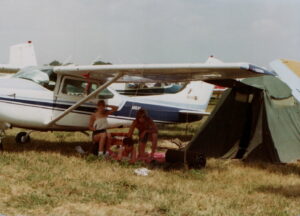
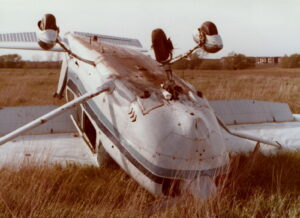
 Flossmoor – 70s – Early
Flossmoor – 70s – Early
Leave a Reply